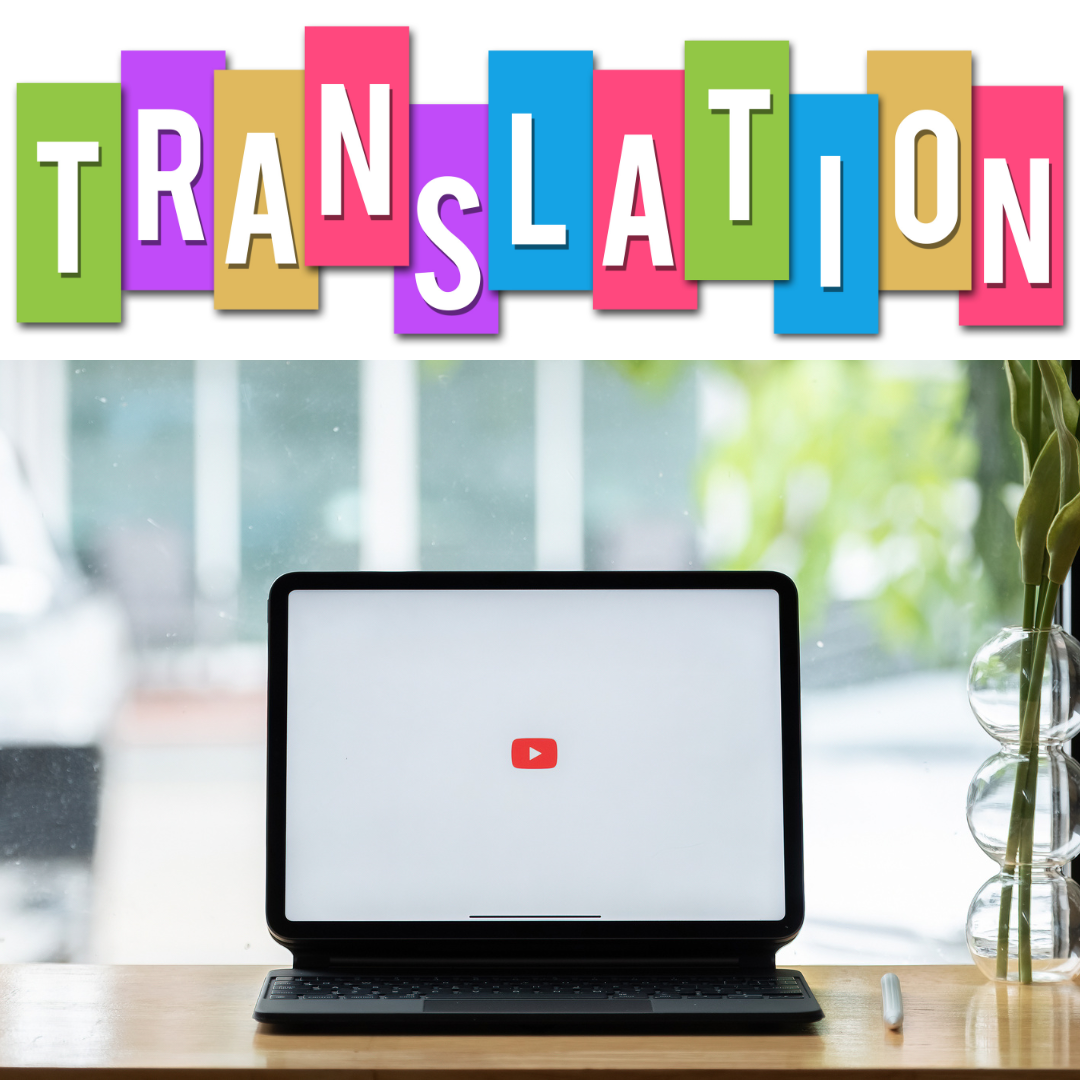JotMe Max
Luz JotMe

cromada


Pergunte, traduza, transcreva e faça anotações, tudo em suas reuniões
Experimente gratuitamentePesquisar blogs
Resposta curta: Os melhores aplicativos de tradução ao vivo de inglês para japonês são JotMe, Kudo, Maestra AI, Talo e DeepL Voice. O JotMe oferece tradução contextual em mais de 107 idiomas, incluindo japonês, com notas de reuniões, perguntas e respostas sobre IA e zero intrusão de bots.
Você está tendo dificuldades para encontrar uma ferramenta de tradução ao vivo de inglês para japonês que realmente funcione em reuniões e webinars? A realidade é que, embora muitas opções prometam suporte linguístico em tempo real, a maioria fica aquém, seja perdendo um contexto crítico ou causando atrasos frustrantes.
Então, arregaçamos as mangas e testamos mais de 20 tradutores ao vivo de inglês para japonês, usando tudo, desde diálogos comerciais comuns até discussões técnicas e em japonês em nível nativo. Depois de analisar o hype, reduzimos nossa lista para cinco ferramentas de destaque com recursos que você realmente usará e precisão nas quais você pode confiar.
Neste artigo, você encontrará os pontos fortes e as peculiaridades de cada plataforma. De resumos rápidos de reuniões a vocabulário específico do setor, essas ferramentas preenchem a lacuna entre a tradução ao vivo em inglês e japonês, oferecendo velocidade, privacidade e precisão. Dessa forma, você pode se concentrar na conversa, não no tradutor.
Antes de se aprofundar em cada ferramenta, abaixo está um resumo conciso do que cada plataforma oferece para tradução ao vivo de inglês para japonês:
Abaixo está uma comparação lado a lado das cinco principais ferramentas de tradução ao vivo de inglês para japonês, destacando os principais recursos, como tradução em tempo real com IA, notas de reuniões, compartilhamento de traduções, suporte de idiomas e muito mais.
| Key Features | JotMe | Kudo | Maestra AI | Talo | DeepL Voice |
|---|---|---|---|---|---|
| AI Real-Time Translation | ✅ | ✅ | ✅ | ✅ | ✅ |
| Meeting Notes | ✅ | N/A | Limited | N/A | N/A |
| Sharing Translation Minutes | ✅ | ❌ | ❌ | ❌ | ❌ |
| Bullet-Point Translation | ✅ | ❌ | ❌ | ❌ | ❌ |
| Supported Platforms | Google Meet, Zoom, Teams, and Webex | Teams, Zoom, Webex, Hopin, ON24, Bizzabo, GlobalMeet, Hubilo, Eventmobi | YouTube, TikTok, Slack, Zoom, OBS, vMix | Zoom, Google Meet, Teams | Web app, Windows, Mac, Microsoft Teams (via AppSource) |
| Language Support | 107 | 60+ | 125+ | 60 | 30+ |
| Free Plan | ✅ | ❌ | ✅ | ✅ (Payment details needed) | ❌ |
Encontrar a ferramenta certa de tradução ao vivo de inglês para japonês não é apenas uma questão de recursos em uma lista. Depois de colocar mais de 20 candidatos em reuniões do mundo real, aprendemos que o que torna um tradutor excelente se resume a alguns detalhes práticos e revolucionários. Veja como separamos as ferramentas que realmente ajudam aquelas que simplesmente ficam bem no papel:
Ao ponderar esses fatores, chegamos a uma pequena lista de ferramentas de tradução ao vivo de inglês para japonês que funcionam perfeitamente em reuniões reais sem atrasar ninguém.
De acordo com Relatório sobre o estado da IA da HubSpot em 2025, 51% dos funcionários estão ansiosos para usar a IA e a automação em suas funções, indicando o quanto as pessoas estão prontas para confiar em ferramentas inteligentes em seu trabalho diário. Equipes remotas de estudantes que podem perder coisas importantes devido às barreiras linguísticas também podem se beneficiar, pois aplicativos de tradução ao vivo de inglês para japonês, como o JotMe, tornam as informações acessíveis com precisão. Então, vamos explorar as 5 principais ferramentas, uma por uma.
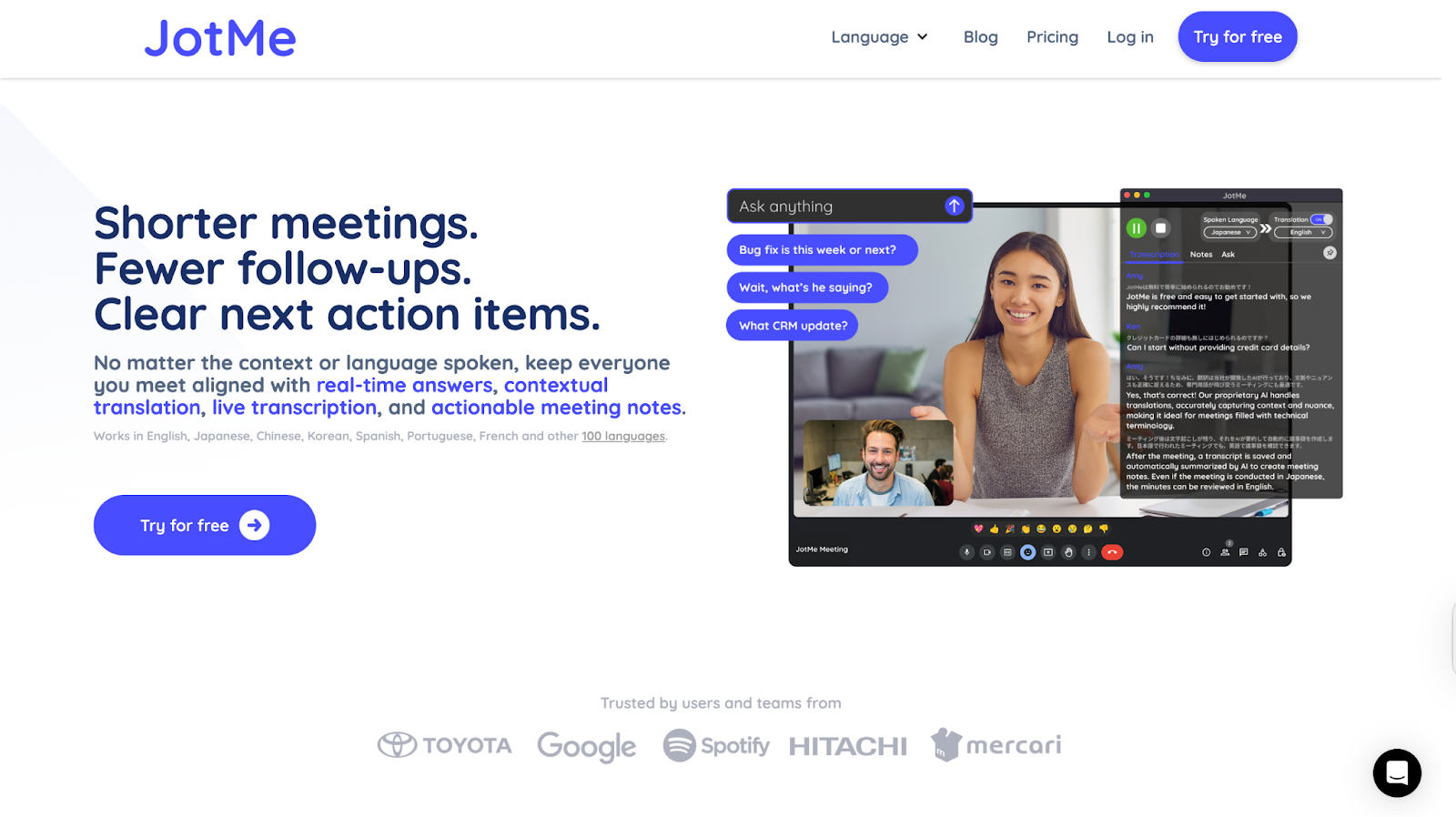
De todas as ferramentas que testamos, o JotMe foi uma das que realmente se destacou. Durante uma sessão do Google Meet, quando queríamos comunicar nosso plano de blog semanal ao nosso cliente japonês, o JotMe forneceu com precisão tradução em tempo real imediatamente. É como ter um assistente confiável trabalhando constantemente ao nosso lado, traduzindo contextualmente e até mesmo respondendo nossas perguntas em tempo real.
O JotMe suporta tradução em tempo real baseada em IA em 107 idiomas, incluindo japonês, e vem repleto de recursos como transcrição ao vivo, notas de reuniões de IA e insights de IA durante chamadas, gravações de reuniões e muito mais. Além disso, ele funciona perfeitamente em plataformas como Zoom, Teams, Google Meet, Webex, Slack e muito mais, sem precisar de bots para participar de suas reuniões.
Plataformas suportadas: Zoom, Line, Google Meet, Equipes, Slack, Webex, Discord e muito mais.
Tradução contextual
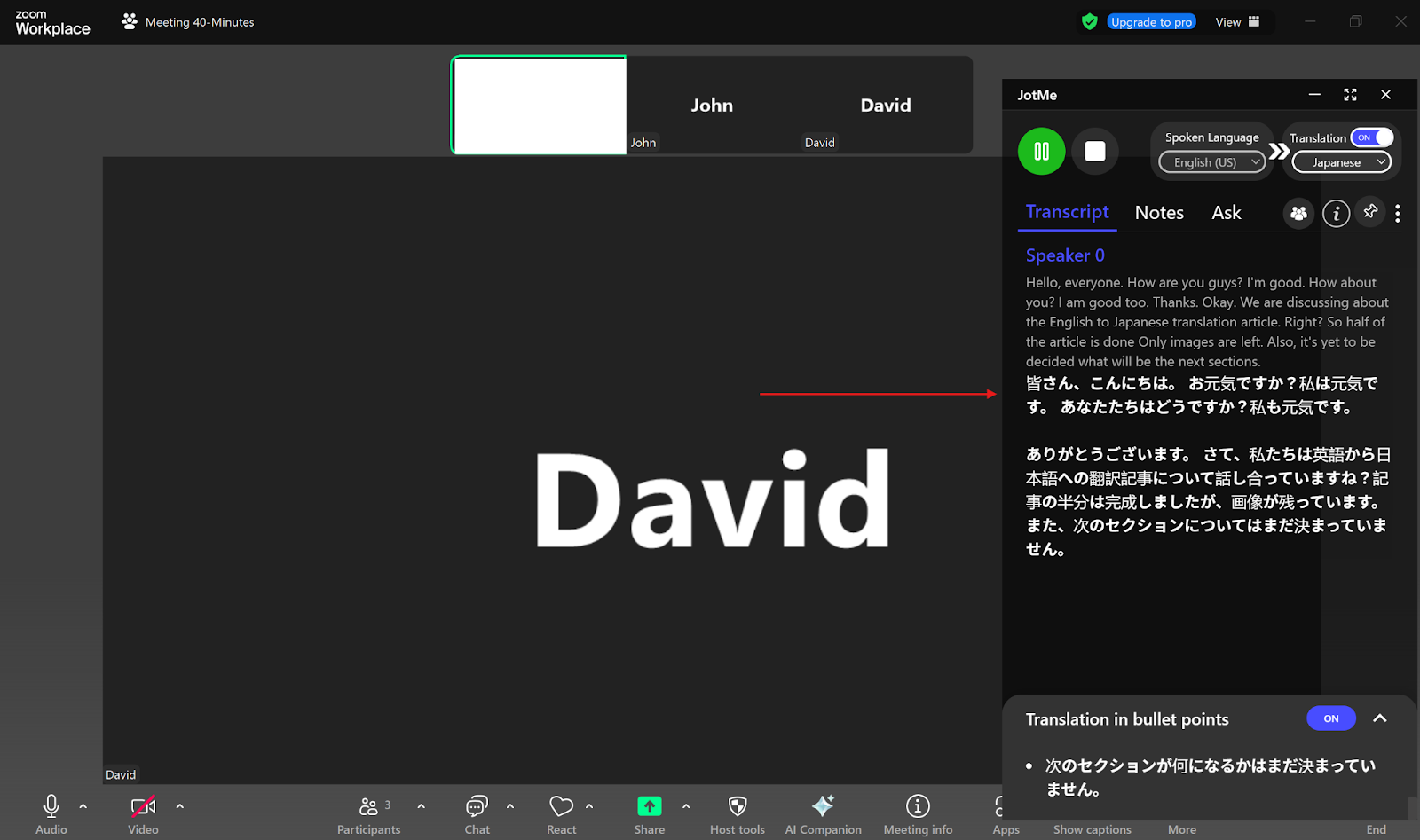
Durante uma análise recente do projeto realizada em inglês, o JotMe traduziu a conversa ao vivo para o japonês. O que se destacou foi o quão bem ela lidou com termos específicos do setor e com mudanças sutis de tom. Ao invés de fornecer resultados palavra por palavra, as traduções parecem naturais e fáceis de seguir. Isso porque o JotMe usa PNL e reconhecimento de fala avançados para entender todo o contexto da discussão, não apenas as linhas individuais. Como resultado, mesmo quando ideias complexas foram compartilhadas, as traduções em japonês permaneceram precisas e claras, ajudando todos a se manterem alinhados em tempo real. Além disso, você também ficará bem organizado notas de reunião bilíngues no Google Meet, ajudando você a planejar futuras reuniões.
Além disso, se por acaso você pronunciar alguma palavra incorretamente, o recurso de tradução contextual do JotMe entende a palavra e a corrige. Por exemplo, na tradução abaixo, um de nós disse 'lutar' em vez de 'fugir', e a tradução japonesa ainda traduziu corretamente para voar!
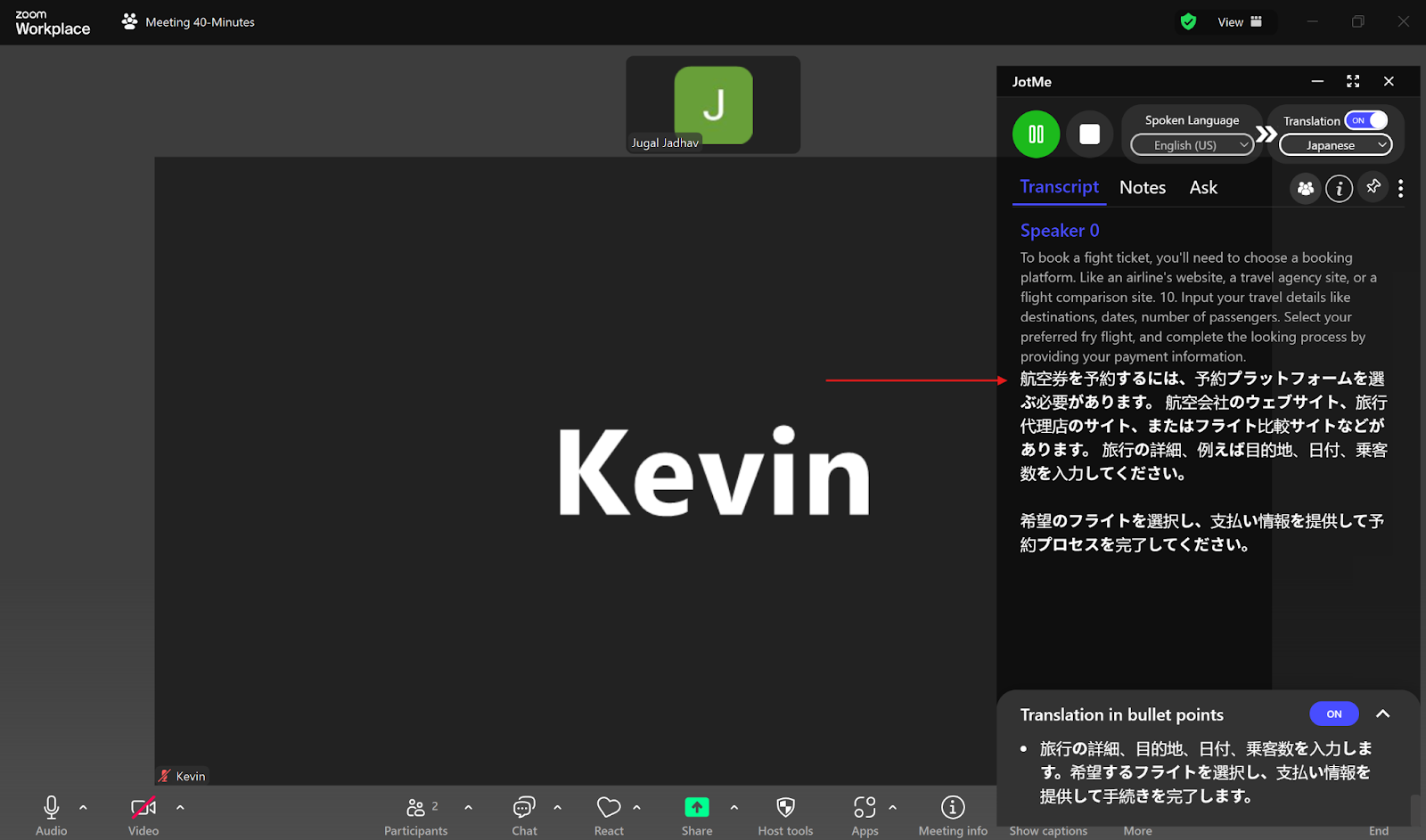
Compartilhando minutos de tradução
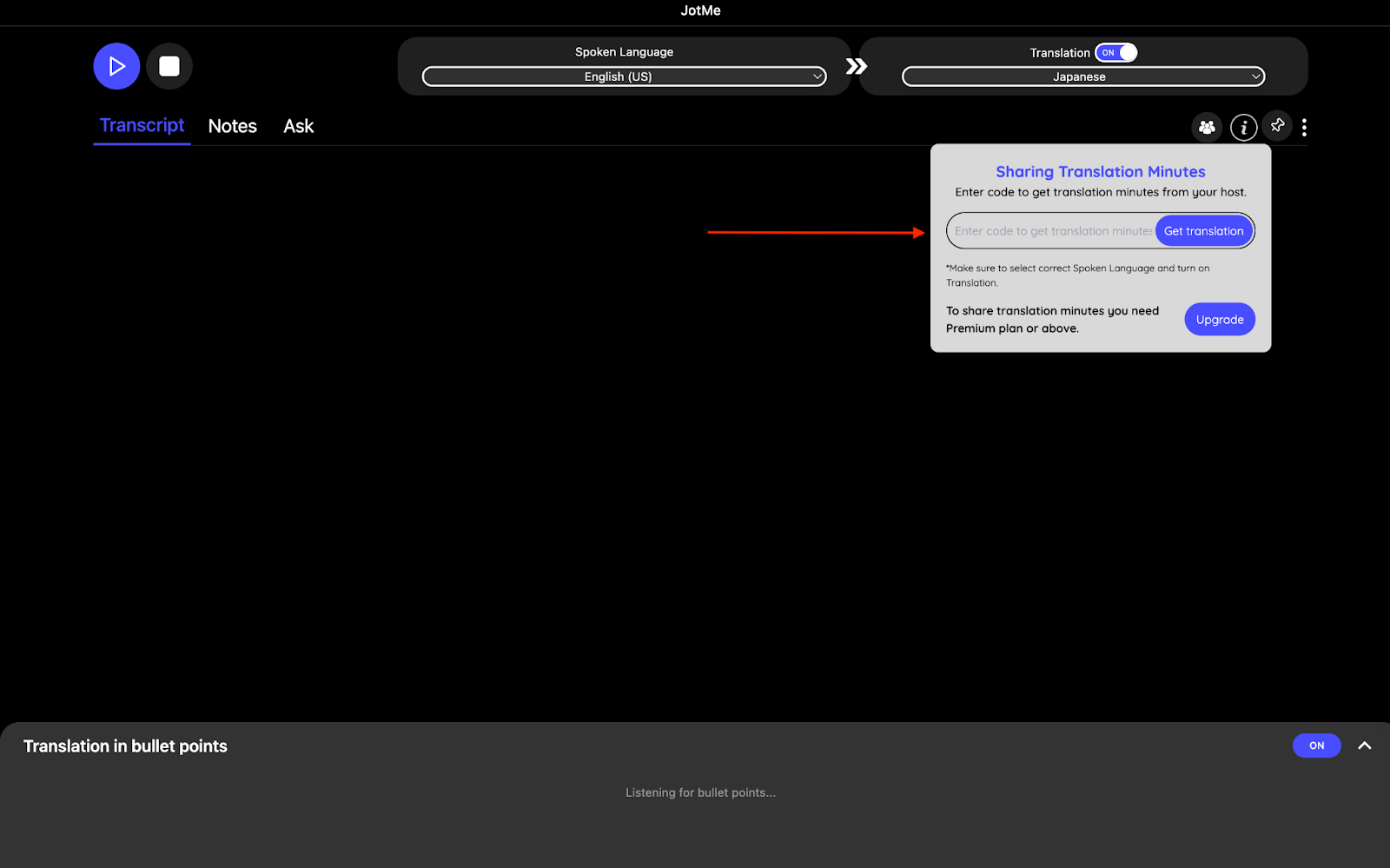
O que diferencia o JotMe é sua opção de compartilhamento de tradução. Essa opção permite que todos acessem as traduções da reunião ao vivo sem precisar de um plano pago. Um código de acesso é gerado quando a gravação e a tradução são ativadas, que os participantes podem usar para acompanhar em tempo real. Dessa forma, notas de reuniões, traduções e transcrições permanecem acessíveis a todos, sem custos extras ou a necessidade de inscrições adicionais.
Insights e tradução de IA em marcadores
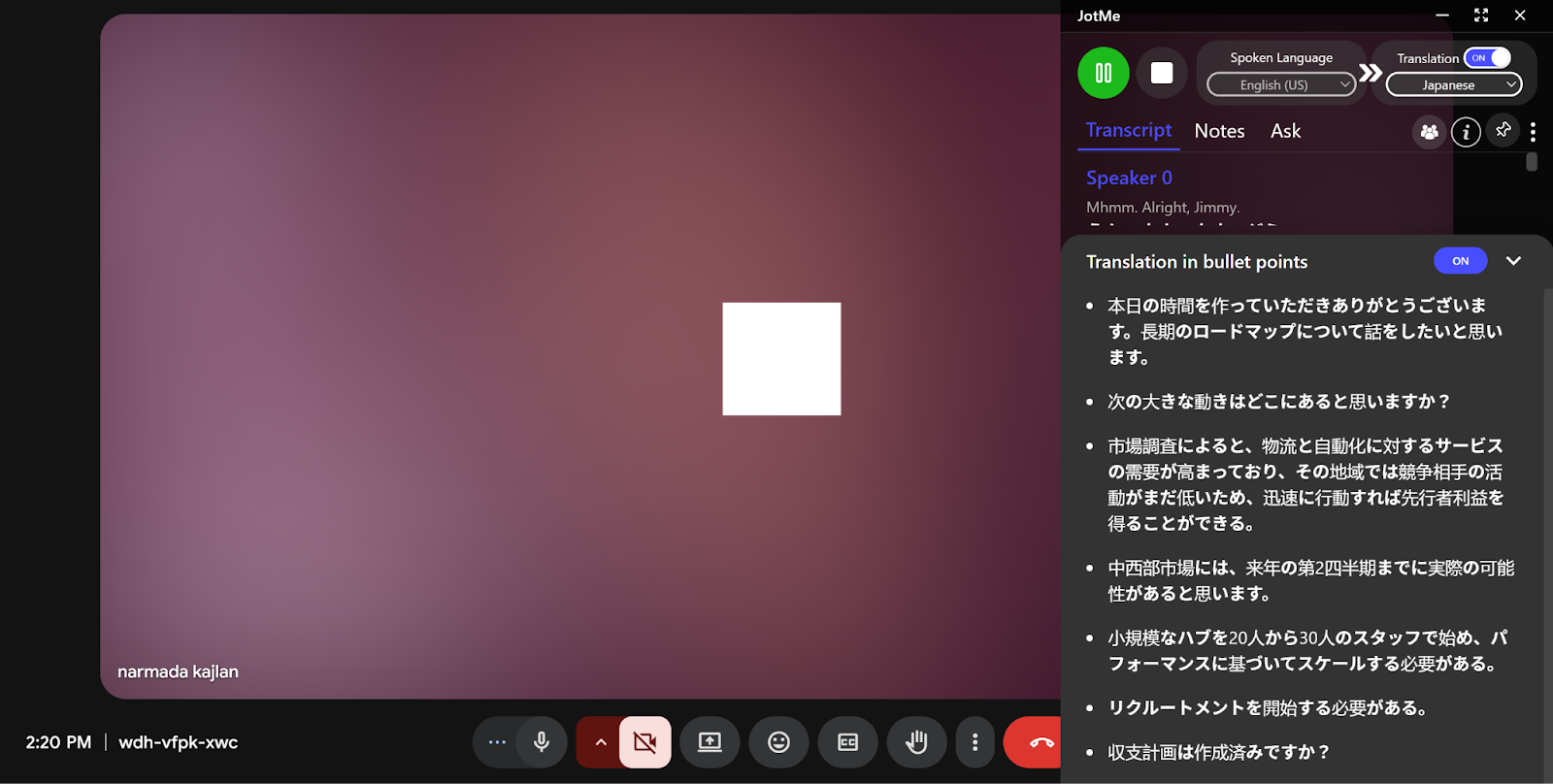
Durante nosso teste, a tradução com marcadores do JotMe realmente nos impressionou. Ao discutir estratégias para controlar a raiva em inglês, a tradução ao vivo organizou cuidadosamente os pontos-chave em listas de marcadores em japonês. Os insights de IA nos deram um contexto rápido sobre as prioridades de cumprimento e responderam às perguntas instantaneamente. Isso facilita a compreensão e a tomada de medidas sobre o conteúdo da reunião para todos os envolvidos.
Tradução multilíngue
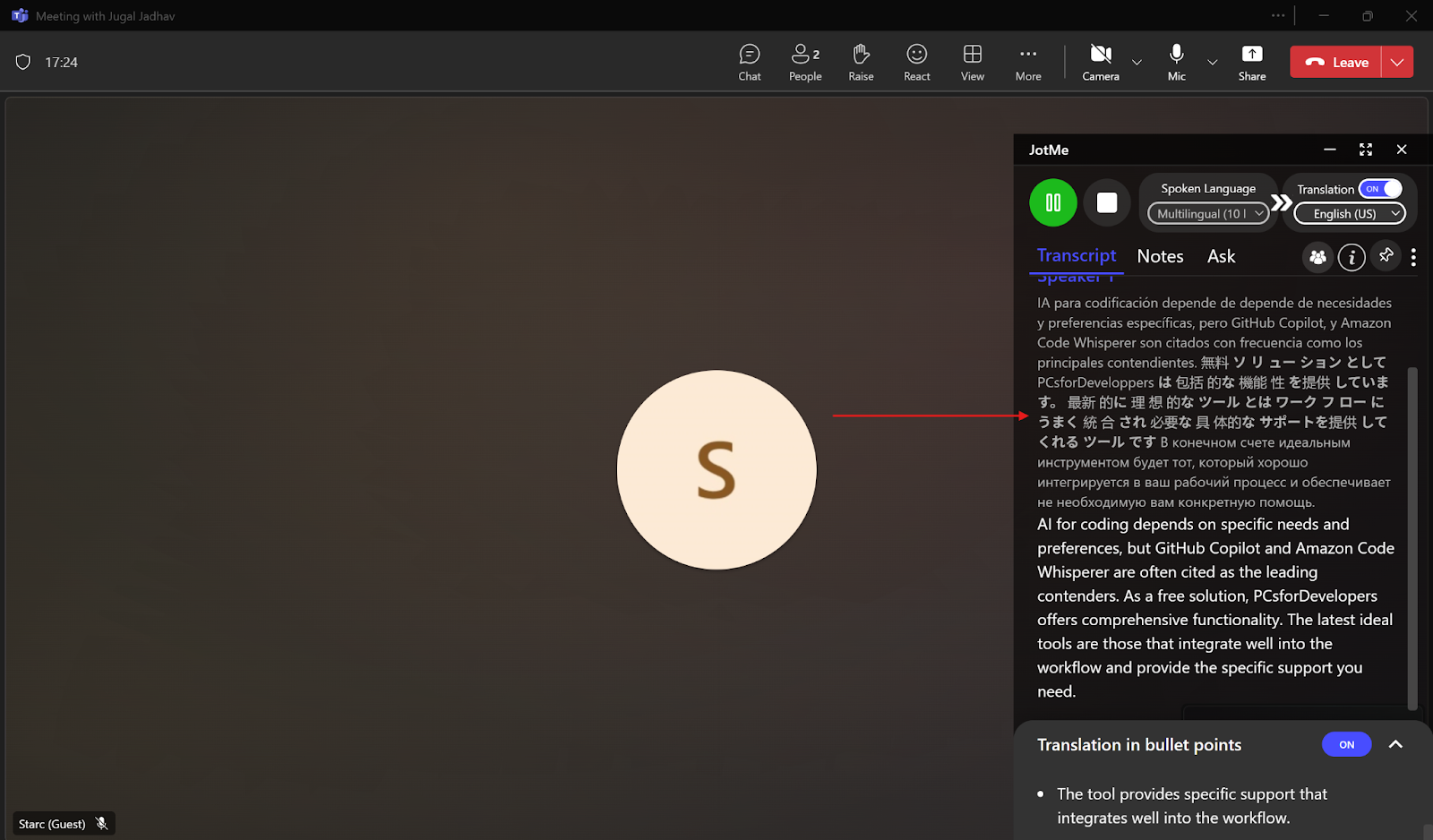
O JotMe pode fazer tradução simultânea em tempo real de até 10 idiomas, incluindo japonês, inglês, espanhol, russo, francês, etc., para o idioma de sua preferência. Para isso, você precisa definir o “Idioma falado” como multilíngue e o idioma “Tradução” para o idioma de saída desejado. O JotMe detectará automaticamente o idioma falado em suas reuniões e fornecerá a tradução ao vivo no idioma selecionado. O JotMe também oferece um transcrição multilíngue opção que transcreverá suas reuniões multilíngues com facilidade. Esses dois recursos se combinam e provam ser extremamente úteis quando você tem uma reunião do Teams com sua equipe global ou clientes que falam idiomas diferentes.
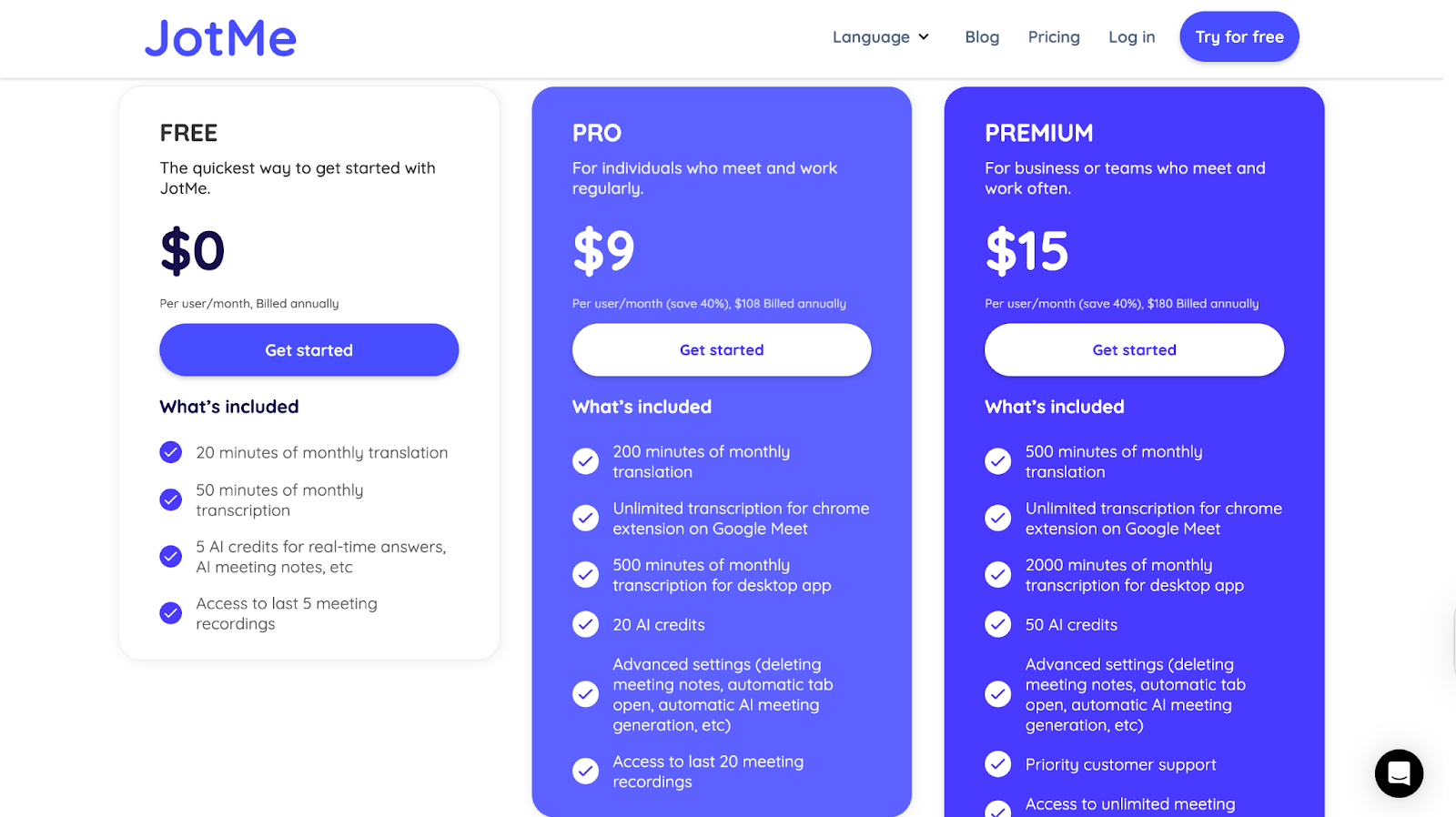
O JotMe oferece uma combinação flexível de planos que permite que você escolha o plano de acordo com sua preferência e orçamento:
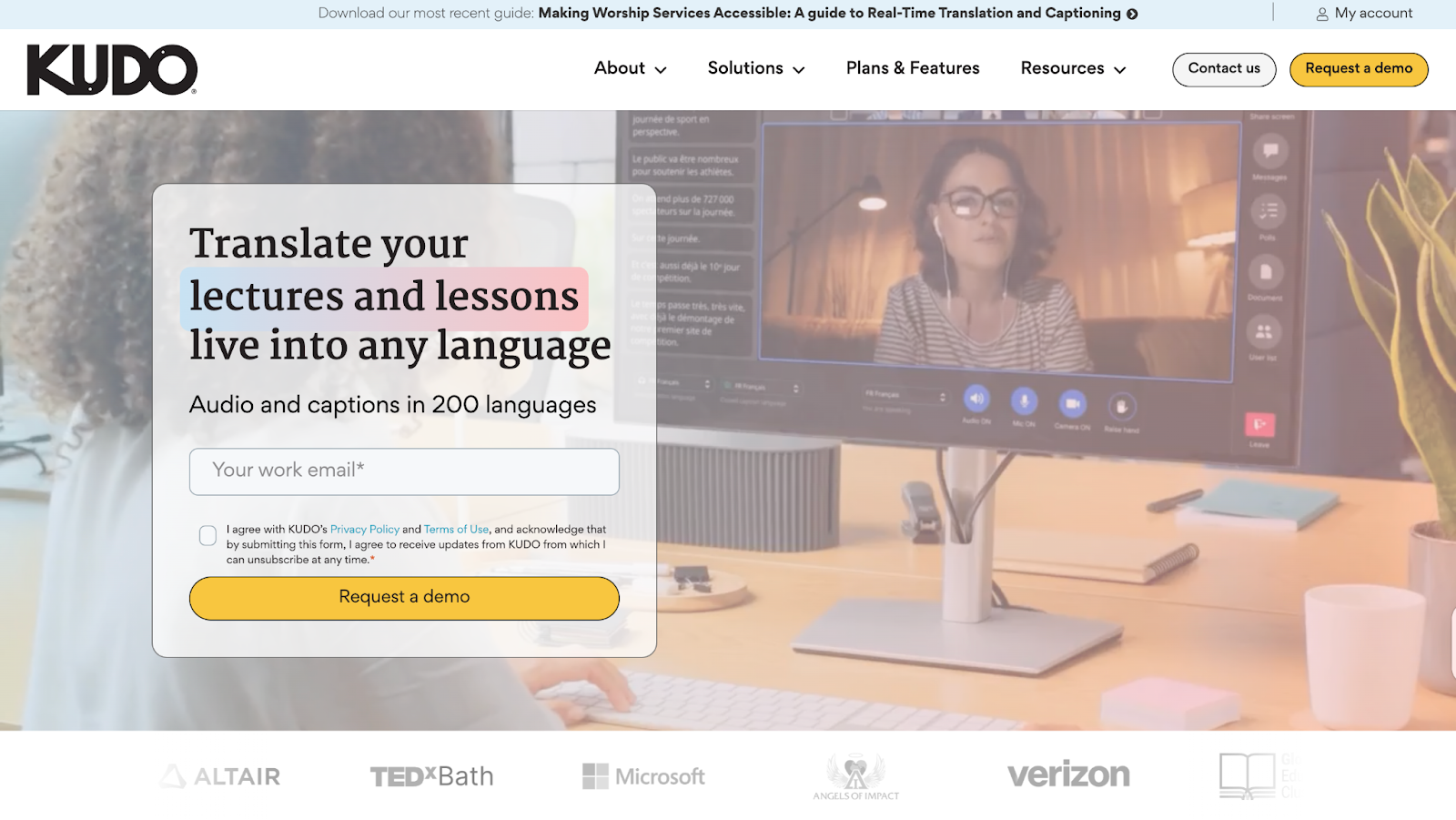
Quando se trata de tradução ao vivo de inglês para japonês, o Kudo funciona particularmente bem para eventos híbridos e de grande escala. Se você tem uma prefeitura global ou uma cúpula virtual no calendário, o Kudo facilita que todos permaneçam na mesma página. Ele faz isso combinando legendas em tempo real com uma rede de intérpretes humanos profissionais, para que todos possam acompanhar a conversa naturalmente, sem perder um único detalhe.
Plataformas suportadas: Hopin, Zoom, Microsoft Teams, On24, Bizaabo.
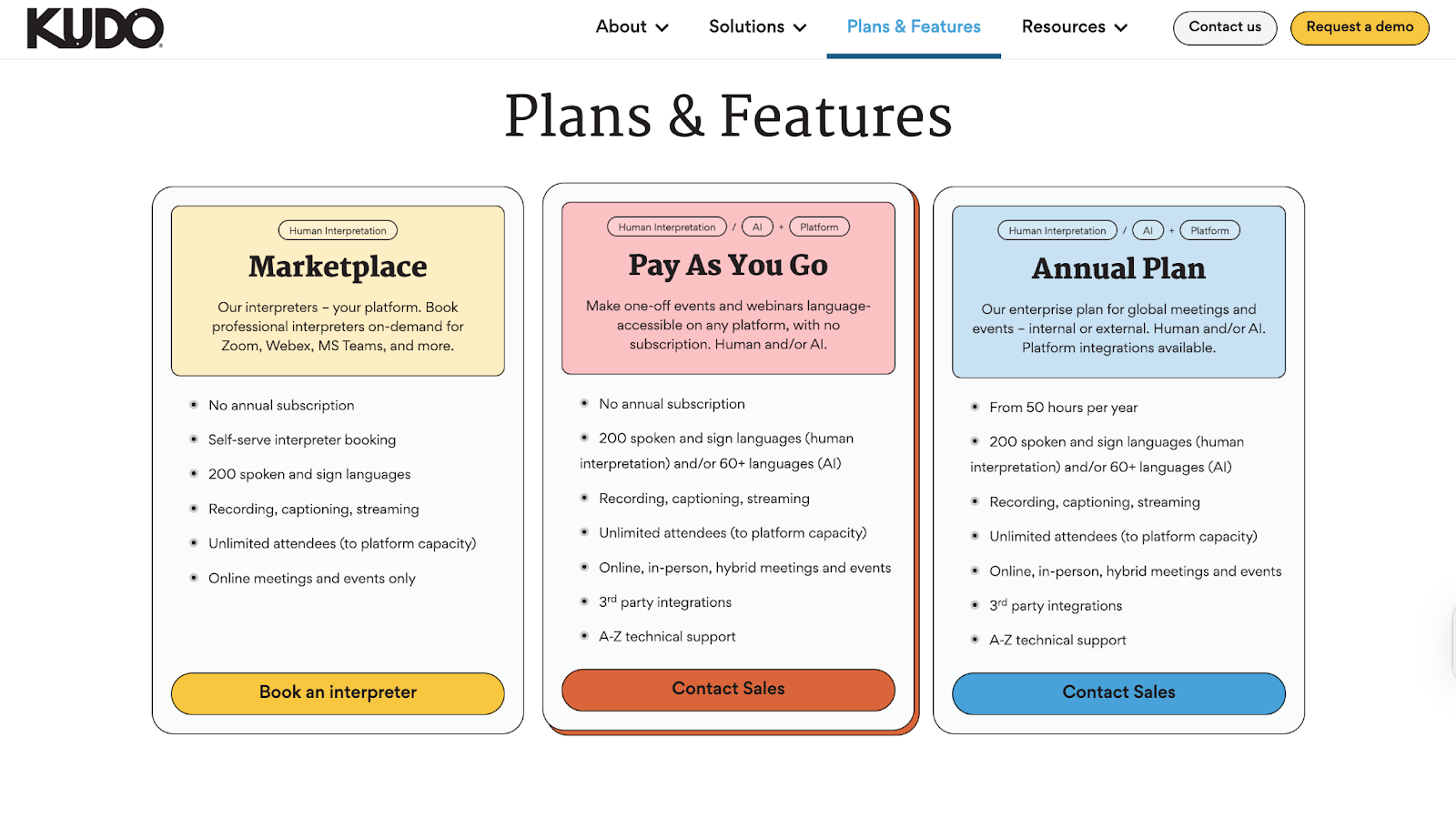
O Kudo oferece licenças anuais para toda a organização, adaptadas ao uso. Os custos dependem de fatores como o número de reuniões, a duração das sessões e os requisitos de intérprete. Você pode escolher:
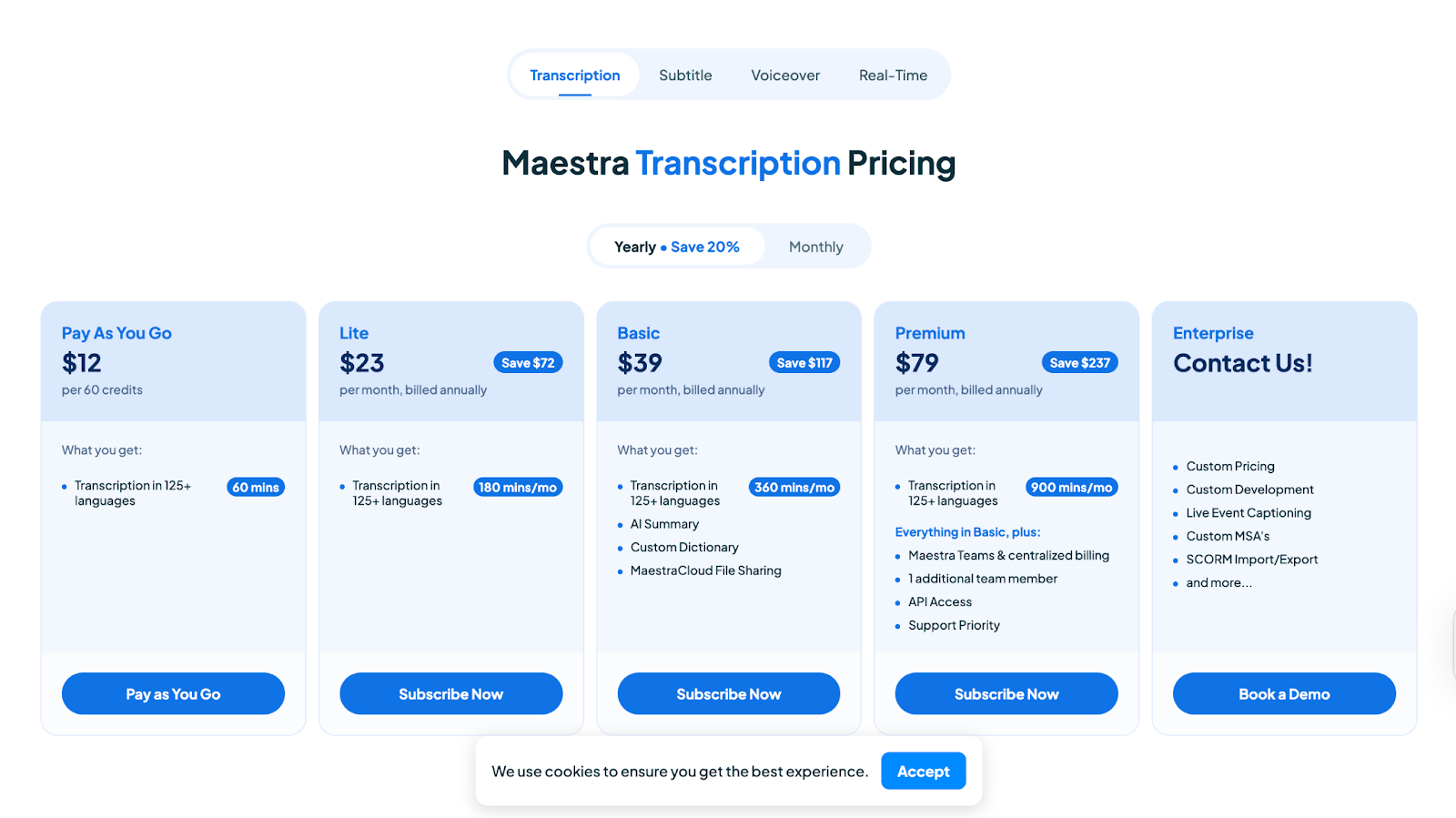
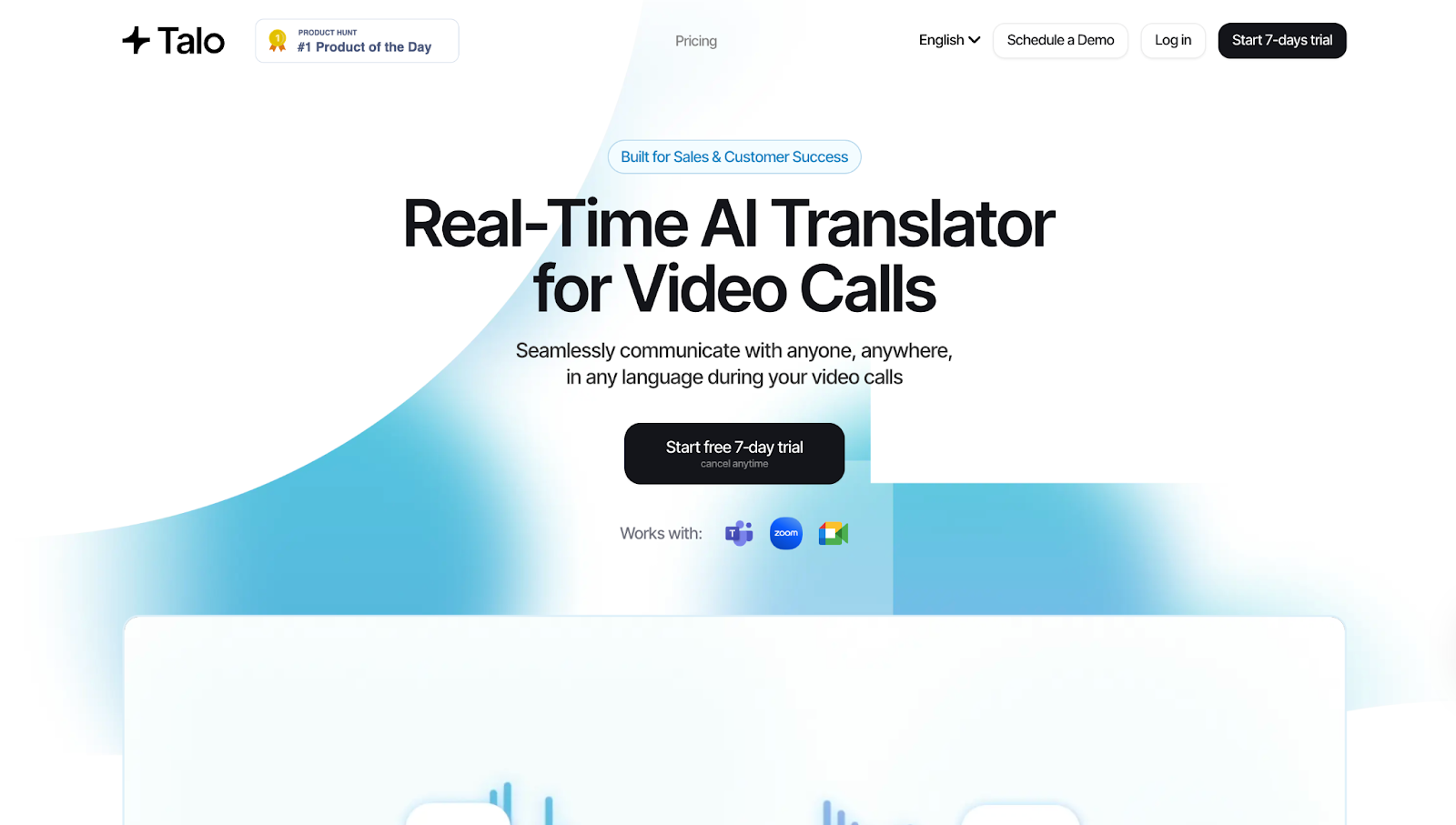
O Talo traz simplicidade e confiabilidade à tradução de voz em tempo real para qualquer pessoa que esteja realizando reuniões no Google Meet, Microsoft Teams ou Zoom. Integramos o Talo em um projeto inicial com parceiros no Japão e nos EUA, e ele teve um bom desempenho: tradução perfeita ao vivo de inglês para japonês com apenas um bot com inteligência artificial na ligação.
Plataformas suportadas: Google Meet, Teams e Zoom.
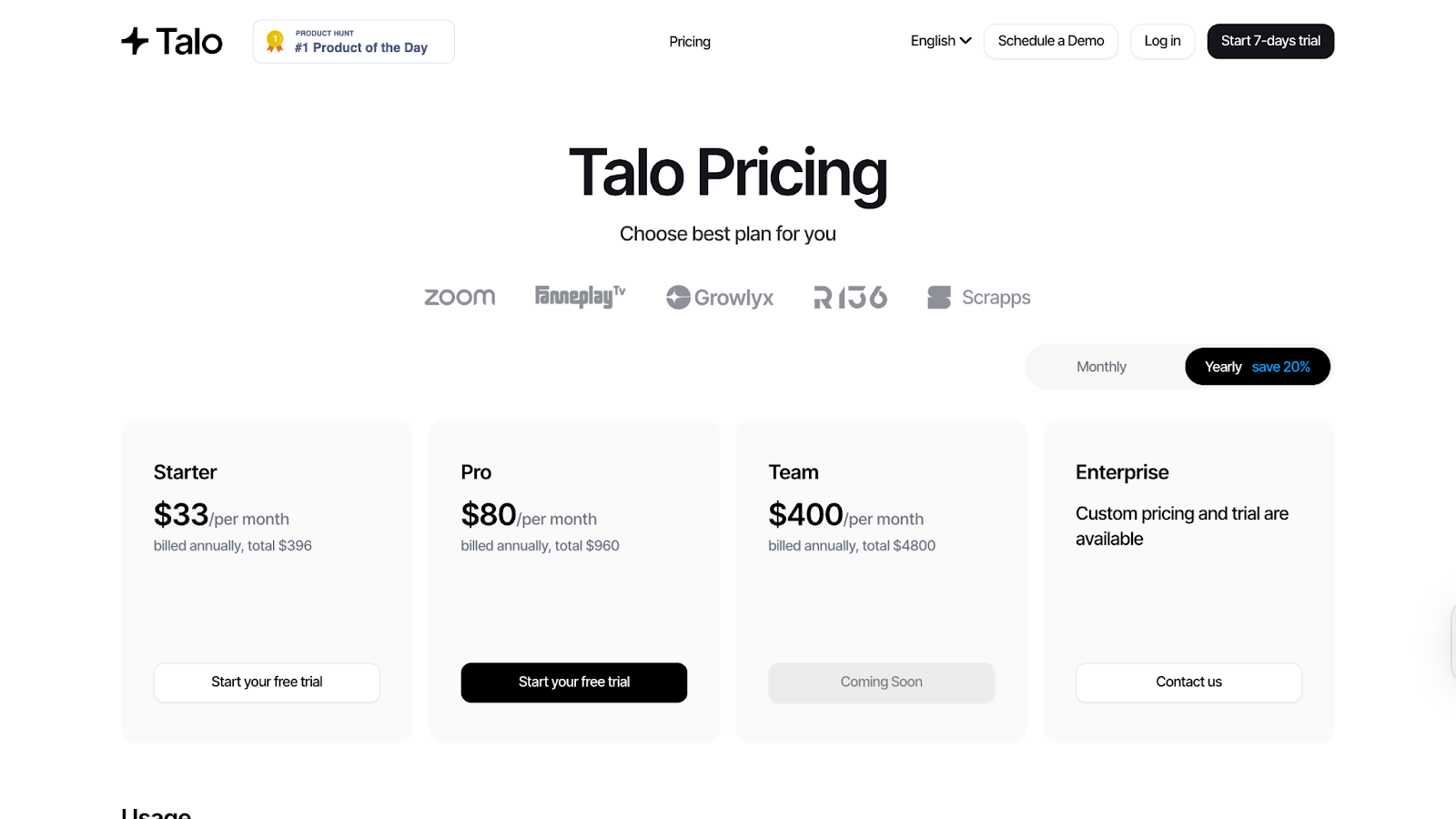
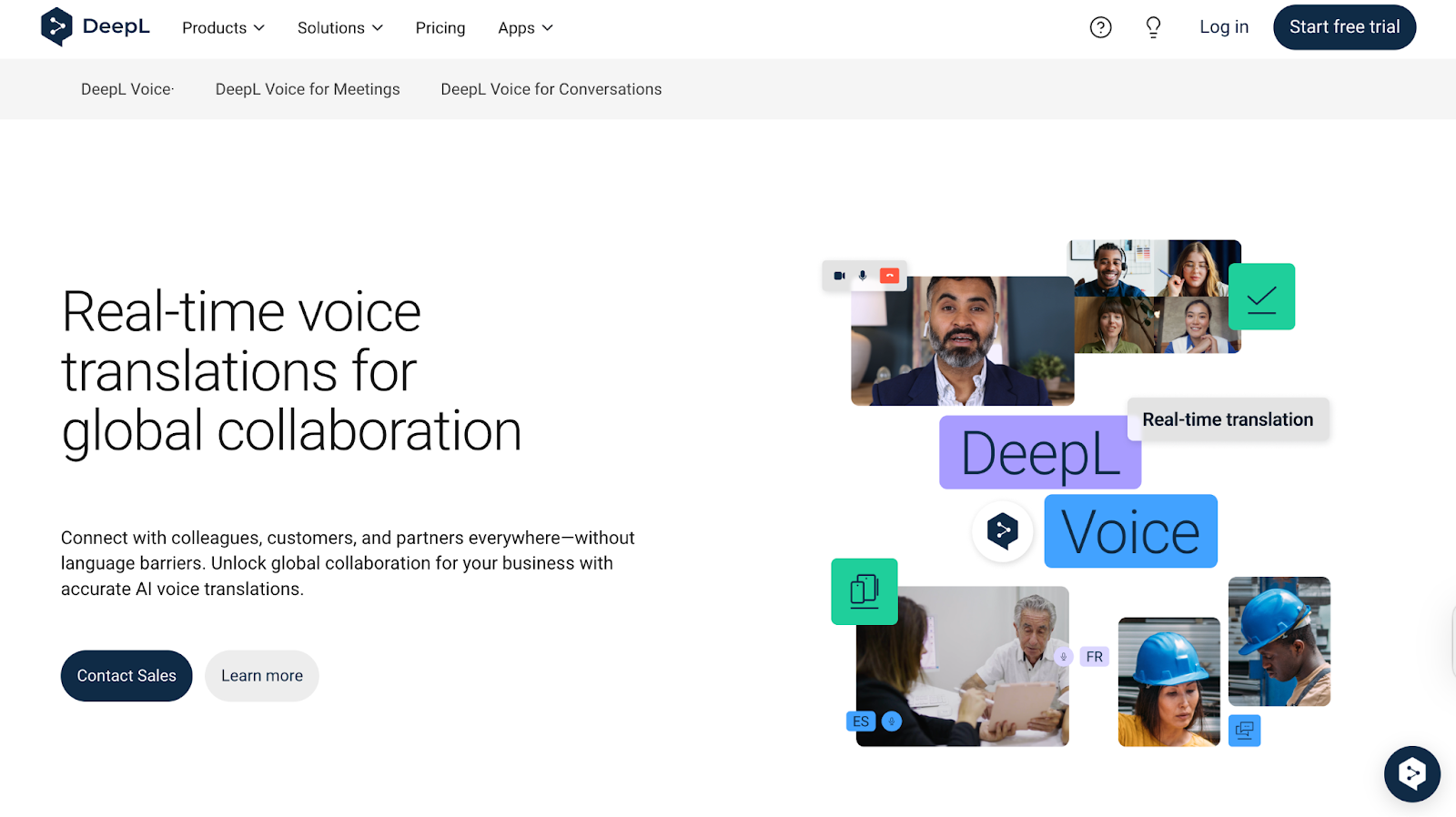
Precisa de uma maneira simples de traduzir o inglês falado para o japonês (e vice-versa) que realmente pareça natural? O DeepL Voice faz exatamente isso. Durante nosso teste, a tradução acompanhou conversas informais e técnicas, alternando facilmente entre inglês e japonês sem pausas incômodas. Ele até capta sotaques e padrões de fala, mas o suporte linguístico inadequado pode ser um problema se você precisar de mais opções de idioma.
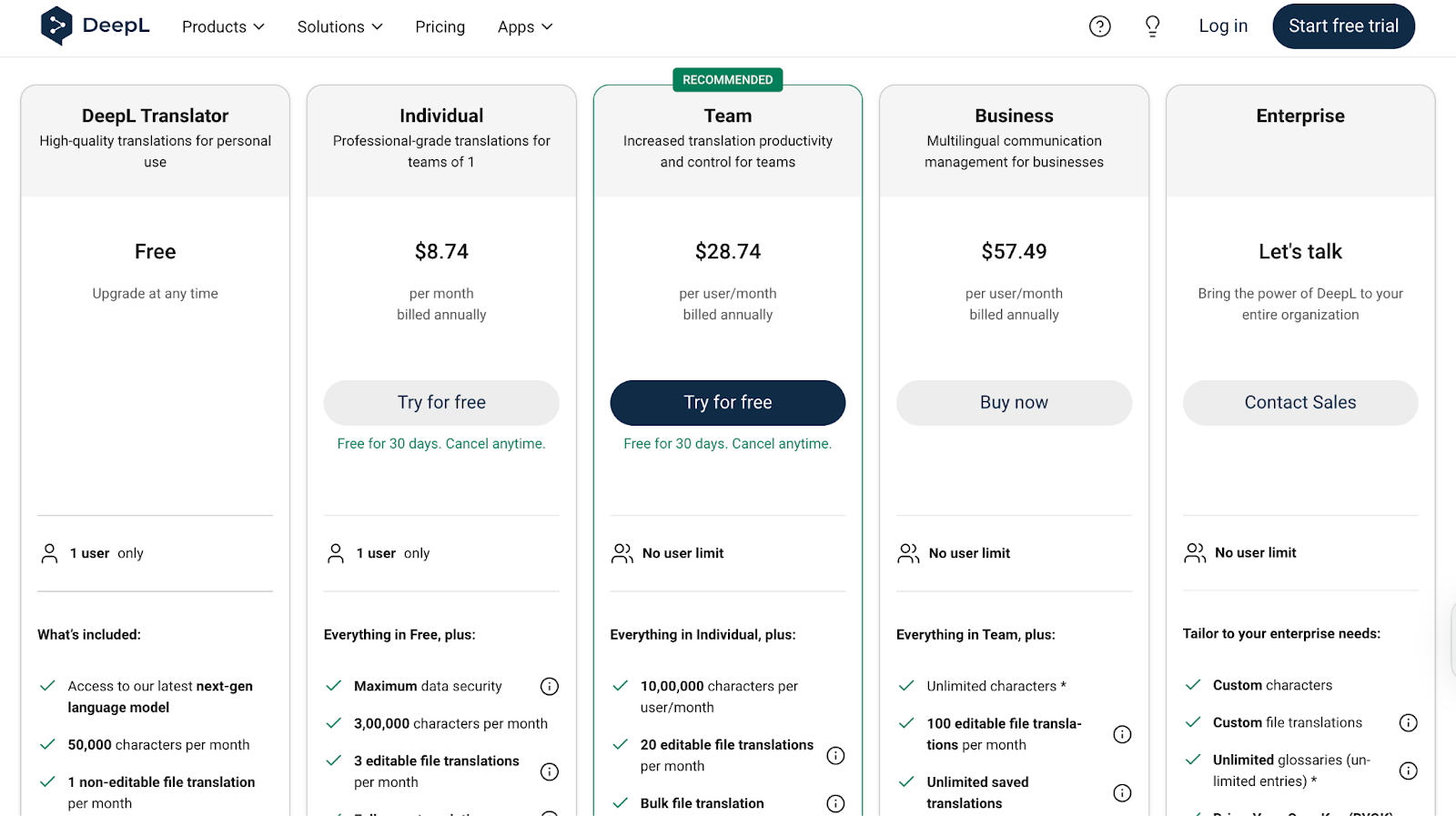
Selecionar as ferramentas corretas de tradução ao vivo de inglês para japonês depende inteiramente de suas prioridades, incluindo precisão, fluxo de trabalho, orçamento e contexto.
No entanto, o problema é o seguinte: a tradução ao vivo não se trata apenas de trocar palavras; trata-se de intenção capturar, tom e contexto cultural. O JotMe se destaca nessa área, oferecendo perguntas e respostas em tempo real, integrações perfeitas de plataformas, tradução contextual e compartilhamento sem esforço. Experimente o JotMe de graça e experimente uma tradução fácil de inglês para japonês em sua próxima reunião!
Sim, ferramentas de tradução ao vivo de IA, como o JotMe, podem traduzir idiomas em tempo real. Com o JotMe, você pode obter tradução ao vivo em 107 idiomas, além da opção de obter tradução em marcadores, compartilhar atas de tradução com outros participantes de uma reunião, por exemplo, e uma tradução contextual precisa.
Com o JotMe, é tão simples quanto instalar a extensão do Chrome e selecionar “Inglês → Japonês” antes da ligação. Participe de sua sessão do Zoom, Google Meet ou Teams normalmente e o JotMe começará a traduzir o inglês falado em legendas em japonês na tela em tempo real; não são necessários bots ou logins extras.
Não. Quando você grava uma reunião com o JotMe e ativa a tradução, você gera um código de compartilhamento. Qualquer pessoa com esse código pode gerar legendas ao vivo, notas de reuniões e transcrições pós-chamada gratuitamente; não é necessário se inscrever no plano.
Ferramentas como JotMe e Talo funcionam com alto-falantes rápidos e jargões técnicos. No entanto, com o mecanismo contextual do JotMe, você pode obter uma tradução precisa de termos específicos do setor e até mesmo se adaptar aos sotaques dos falantes. Além disso, os resumos com marcadores e as transcrições pesquisáveis do JotMe ajudam você a confirmar ou corrigir rapidamente qualquer passagem complicada após o término da reunião.
O JotMe oferece o melhor nível gratuito para uso ocasional. Seu plano gratuito oferece 20 minutos de tradução ao vivo e 50 minutos de transcrição por mês, além de 5 créditos de IA para perguntas e respostas instantâneas. Isso o torna ideal para estudantes ou profissionais que precisam de tradução confiável de inglês para japonês sem custos contínuos.

Win Globally
